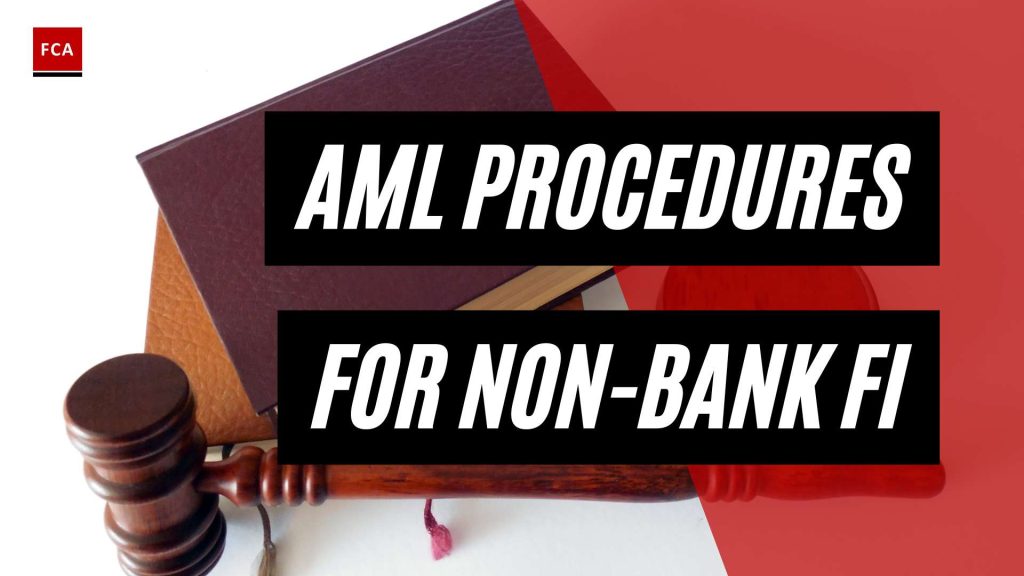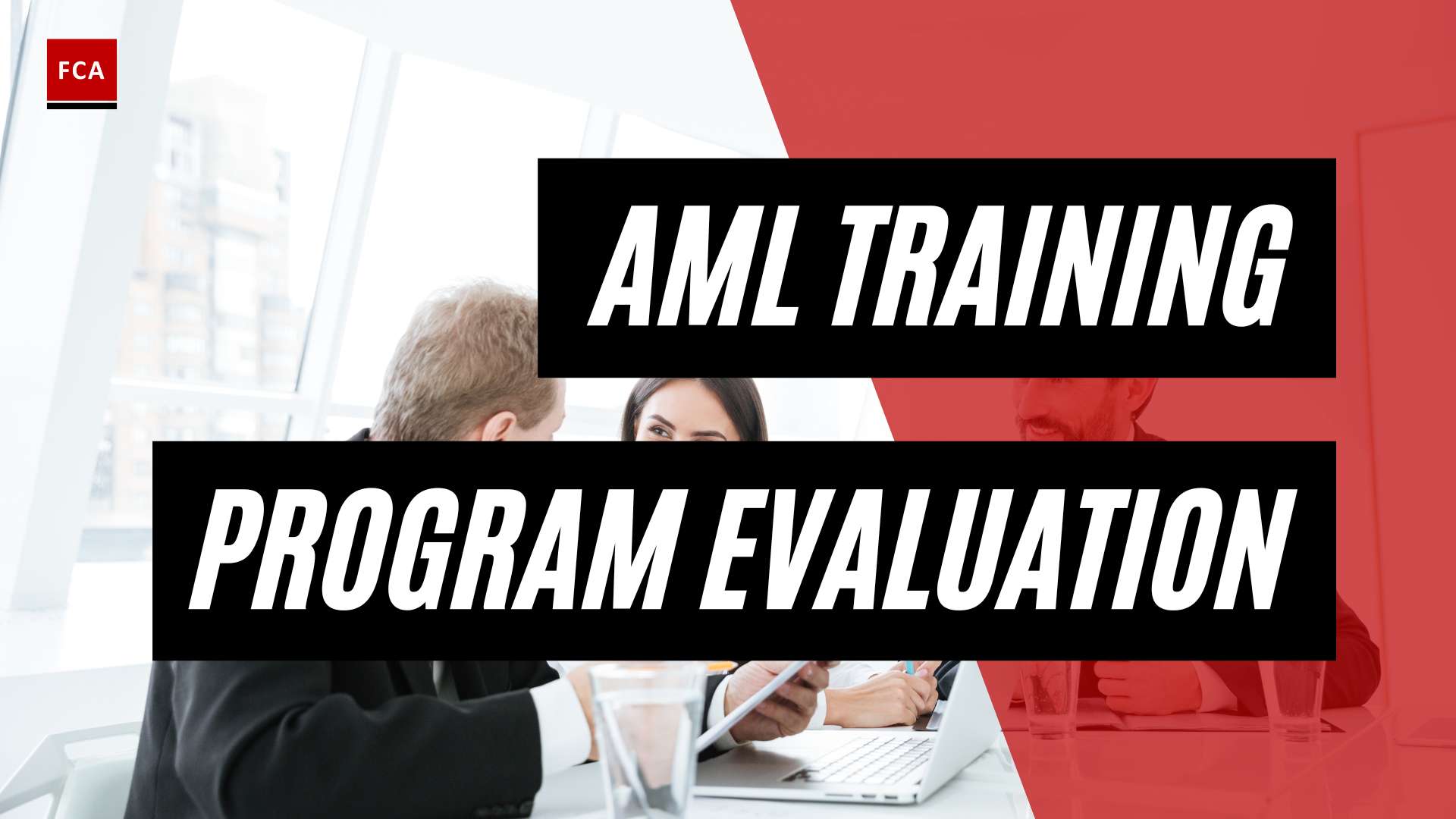AML for Non-Bank Financial Institutions: An Overview
In the realm of anti-money laundering (AML), non-bank financial institutions (NBFIs) play a crucial role in the global financial system. Understanding the unique characteristics of NBFIs, the regulatory requirements they face, and the risks they encounter is essential to develop effective AML procedures tailored to their needs.
Understanding Non-Bank Financial Institutions (NBFIs)
Non-bank financial institutions refer to institutions other than banks that offer financial services. These include entities such as insurance companies, money services businesses, securities firms, and credit unions. The USA PATRIOT Act has defined a wide range of entities as financial institutions (BSA/AML Manual).
NBFIs often provide services similar to those offered by traditional banks but may operate under different regulatory frameworks. They serve as intermediaries, facilitating transactions and providing access to financial products and services for individuals and businesses. As a result, NBFIs can be vulnerable to money laundering and terrorist financing risks.
Regulatory Requirements for Non-Bank Financial Institutions
Non-bank financial institutions are subject to various regulatory requirements aimed at combating money laundering and terrorist financing. These requirements are similar to those applicable to banks and are designed to ensure effective AML controls and reporting.
Some NBFIs are required to develop an AML program, comply with the reporting and recordkeeping requirements of the Bank Secrecy Act (BSA), and report suspicious activity, similar to banks. These obligations are essential in detecting and preventing illicit financial activities, protecting the integrity of the financial system, and assisting law enforcement efforts (BSA/AML Manual).
Risks Faced by Non-Bank Financial Institutions
Non-bank financial institutions face unique and significant money laundering risks due to their customer base, products, services, geographic locations, and regulatory environment (FFIEC). The nature of their operations can attract individuals looking to exploit their financial products and services for illicit purposes.
The customer base of NBFIs plays a crucial role in determining the money laundering risks they face. High-risk customers are those with the potential to abuse the institution’s financial products and services for illicit purposes. It is imperative for NBFIs to implement robust customer due diligence measures to identify and mitigate these risks (FFIEC).
In addition to customer-related risks, NBFIs must also address risks associated with the specific products and services they offer. The complexity of financial transactions, the use of new technologies, and the potential for cross-border activities further contribute to the money laundering risks faced by NBFIs.
By understanding the unique characteristics of non-bank financial institutions, the regulatory requirements they must adhere to, and the risks they encounter, it is possible to develop effective AML procedures tailored to their specific needs. A comprehensive AML program, including risk-based customer due diligence, robust policies and procedures, and ongoing employee training, is essential for NBFIs to mitigate the risk of money laundering and terrorist financing activities.
Developing an Effective AML Program for Non-Bank Financial Institutions
To effectively mitigate the risks associated with money laundering and terrorist financing, non-bank financial institutions need to develop and implement robust anti-money laundering (AML) programs tailored to their specific risk profiles. These programs should encompass various key components, including tailoring AML programs to the risk profile, comprehensive policies and procedures, risk-based customer due diligence, and ongoing employee training.
Tailoring AML Programs to the Risk Profile
Non-bank financial institutions should conduct a thorough assessment of the specific risks they face to tailor their AML programs accordingly. This involves identifying the types of customers, products, services, and geographic locations that pose higher risks for potential money laundering activities. By understanding these risks, institutions can allocate resources more effectively and implement appropriate controls to mitigate the identified risks. For more information on AML compliance for non-bank financial institutions, refer to our article on aml compliance for non-bank financial institutions.
Comprehensive Policies and Procedures
Comprehensive policies and procedures are the foundation of an effective AML program for non-bank financial institutions. These policies and procedures should outline the institution’s commitment to combatting money laundering and terrorist financing, as well as the specific steps and processes to be followed. They should cover areas such as customer identification and verification, transaction monitoring, suspicious activity reporting, and recordkeeping. By having clear and well-documented policies and procedures, institutions can ensure consistency and accountability in their AML efforts. For more details on AML policies, refer to our article on aml policies for non-bank financial institutions.
Risk-Based Customer Due Diligence
Risk-based customer due diligence (CDD) is a critical component of an effective AML program. Non-bank financial institutions should implement risk-based CDD procedures to identify and verify the identity of customers, assess their potential money laundering risks, and monitor their transactions accordingly. The level of due diligence should be commensurate with the assessed risks. This approach allows institutions to focus their resources on higher-risk customers and transactions, ensuring that appropriate measures are taken to detect and prevent money laundering activities. To learn more about AML requirements, refer to our article on aml requirements for non-bank financial institutions.
Ongoing Employee Training
Regular and comprehensive training is essential to ensure that employees of non-bank financial institutions remain knowledgeable and up-to-date on AML requirements and best practices. Training should cover a range of topics, including money laundering typologies, red flags, and the institution’s internal policies and procedures. By providing ongoing training, institutions can enhance their employees’ ability to identify suspicious activities, understand their reporting obligations, and contribute to the overall effectiveness of the AML program. For more information on AML training, refer to our article on aml training for non-bank financial institutions.
By developing an effective AML program tailored to their risk profile, implementing comprehensive policies and procedures, conducting risk-based customer due diligence, and providing ongoing employee training, non-bank financial institutions can strengthen their defenses against money laundering and terrorist financing activities. It is crucial for these institutions to stay abreast of evolving AML compliance regulations and continuously improve their AML programs to ensure compliance and maintain the integrity of the financial system.
Compliance Challenges and Consequences for Non-Bank Financial Institutions
Non-bank financial institutions (NBFIs) face significant compliance challenges when it comes to implementing effective AML procedures and meeting regulatory requirements. Failure to comply with these regulations can have severe consequences for these institutions. In this section, we will explore the evolving AML compliance regulations, the consequences of non-compliance, and provide case studies highlighting fines and penalties imposed on NBFIs.
Evolving AML Compliance Regulations
AML compliance regulations are continually evolving to keep pace with the changing landscape of financial crimes. Regulatory bodies around the world, such as the Financial Action Task Force (FATF), are constantly issuing guidelines and recommendations to combat money laundering, terrorist financing, and other illicit activities.
Non-bank financial institutions must stay abreast of these evolving regulations to ensure their AML programs remain effective and compliant. Regular monitoring of regulatory updates and engaging with industry associations and regulatory bodies can help NBFIs stay informed and adapt their AML procedures accordingly. For more information on AML regulations specific to non-bank financial institutions, refer to our article on aml regulations for non-bank financial institutions.
Consequences of Non-Compliance
Non-compliance with AML regulations can have far-reaching repercussions for non-bank financial institutions. The consequences of non-compliance can include reputational damage, loss of licenses, and financial penalties. Regulatory authorities have the power to take enforcement action against NBFIs that fail to meet their AML obligations.
Financial penalties for non-compliance can be substantial. NBFIs may face fines that can range from thousands to millions of dollars, depending on the severity of the non-compliance. These penalties can have a significant impact on the financial stability of the institution and its ability to operate effectively.
Case Studies: Fines and Penalties
Several case studies highlight the financial penalties imposed on non-bank financial institutions for non-compliance with AML procedures. For instance, Habib Bank Limited (HBL) was fined $225 million for deficiencies in its AML program, demonstrating the seriousness of non-compliance (Financial Crime Academy). In the United Kingdom, the Financial Conduct Authority (FCA) has levied fines totaling £260 million between 2018 and 2021 against various financial institutions for AML failures (Financial Crime Academy).
These case studies underscore the importance of implementing robust AML procedures and maintaining compliance with regulatory requirements. Non-bank financial institutions must prioritize their AML efforts to mitigate the risks associated with non-compliance and the potential financial penalties involved.
By staying informed about evolving AML compliance regulations, understanding the consequences of non-compliance, and learning from real-world case studies, non-bank financial institutions can take proactive steps to strengthen their AML programs and ensure compliance with regulatory obligations. This will help them safeguard their reputation, maintain the trust of their stakeholders, and contribute to the overall integrity of the financial system.
Leveraging Technology for Enhanced AML Procedures
In today’s digital age, non-bank financial institutions can harness the power of technology to enhance their Anti-Money Laundering (AML) procedures. By leveraging the advancements in RegTech (Regulatory Technology), these institutions can automate compliance checks, streamline their AML processes, and improve risk management capabilities.
Role of RegTech in AML Processes
RegTech solutions offer non-bank financial institutions the ability to automate AML compliance checks, reducing manual efforts and improving efficiency in identifying suspicious activities (Financial Crime Academy). By adopting RegTech solutions, institutions can enhance their AML procedures by:
-
Automating Compliance Checks: RegTech tools utilize advanced algorithms and data analysis techniques to perform real-time checks on transactions, customer profiles, and other relevant data. This automation helps in identifying potential money laundering activities more efficiently and effectively.
-
Streamlining AML Processes: RegTech solutions enable non-bank financial institutions to streamline their AML processes by automating manual tasks, such as data collection, analysis, and reporting. This automation reduces the risk of human error and enhances the overall efficiency of the AML program.
Automating Compliance Checks
One of the key benefits of RegTech in AML procedures is the ability to automate compliance checks. These checks are crucial for identifying suspicious transactions and ensuring regulatory compliance. RegTech tools can analyze large volumes of data in real-time, flagging any unusual or potentially illicit activities. This automation not only improves the accuracy and timeliness of detection but also reduces the burden of manual reviews.
By adopting RegTech solutions, non-bank financial institutions can enhance their risk management capabilities and detect potential money laundering activities more effectively (Financial Crime Academy). The advanced technologies employed by RegTech, such as artificial intelligence and machine learning, enable institutions to analyze patterns, trends, and anomalies in transactional data, thereby improving the detection of suspicious activities.
Improving Risk Management
RegTech solutions also play a vital role in improving risk management for non-bank financial institutions. By automating compliance checks and streamlining AML processes, these tools help institutions identify and mitigate risks associated with money laundering and other financial crimes.
The use of RegTech in AML procedures enables institutions to leverage advanced technologies and data analysis techniques. By analyzing vast amounts of data, RegTech tools can identify patterns and anomalies that may indicate potential money laundering activities. This advanced risk analysis helps institutions make informed decisions, implement appropriate controls, and enhance their overall risk management frameworks.
In conclusion, non-bank financial institutions can greatly benefit from leveraging technology, particularly RegTech, to enhance their AML procedures. By automating compliance checks, streamlining AML processes, and improving risk management capabilities, these institutions can effectively mitigate the risks associated with money laundering and other financial crimes. Embracing technology-driven solutions allows institutions to stay ahead of regulatory requirements and ensure a robust AML program.
Best Practices for AML Procedures in Non-Bank Financial Institutions
To effectively mitigate the risks associated with money laundering and terrorist financing, non-bank financial institutions need to implement robust anti-money laundering (AML) procedures. These best practices ensure compliance with regulatory requirements, maintain effective controls, and foster collaboration with regulatory authorities.
Effective Recordkeeping and Reporting
One of the fundamental pillars of an effective AML program is maintaining accurate and comprehensive records. Non-bank financial institutions must establish and maintain systems that capture and retain relevant customer information, transaction details, and any suspicious activities. These records serve as crucial evidence in investigations and audits, aiding in the detection and prevention of money laundering and terrorist financing activities.
Additionally, non-bank financial institutions should have well-defined reporting mechanisms in place. Timely and accurate reporting of suspicious transactions to the appropriate authorities is essential for combating financial crimes. This includes filing suspicious activity reports (SARs) and any other required reports as mandated by regulatory bodies. Robust recordkeeping and reporting practices demonstrate the institution’s commitment to AML compliance and facilitate cooperation with law enforcement and regulatory agencies.
Maintaining Effective Controls
Non-bank financial institutions must establish and maintain effective controls to prevent money laundering and terrorist financing activities. This includes implementing risk-based customer due diligence (CDD) procedures, ongoing monitoring of customer activity, and conducting regular internal audits.
Risk-based CDD involves assessing the level of risk associated with each customer and tailoring the due diligence measures accordingly. This ensures that higher-risk customers receive enhanced scrutiny, while lower-risk customers are subject to appropriate levels of monitoring. By implementing risk-based CDD, non-bank financial institutions can allocate their resources effectively and focus their efforts on high-risk areas.
Ongoing monitoring of customer activity is essential to detect suspicious patterns or transactions. Through the use of advanced technology and data analytics, institutions can identify unusual behavior, such as sudden increases in transaction volumes or frequent transfers to high-risk jurisdictions. Timely detection of suspicious activity allows for swift action to be taken, further safeguarding the institution from potential risks.
Internal audits play a crucial role in evaluating the effectiveness of an institution’s AML program. These audits assess the adequacy and implementation of policies, procedures, and controls. Regular audits help identify any weaknesses or gaps in the AML program, allowing for timely remediation and continuous improvement.
Collaboration with Regulatory Authorities
Non-bank financial institutions should actively collaborate with regulatory authorities to combat money laundering and terrorist financing. This collaboration involves maintaining open lines of communication, promptly responding to regulatory inquiries, and participating in information-sharing initiatives.
Establishing a positive and cooperative relationship with regulatory authorities fosters transparency and demonstrates the institution’s commitment to AML compliance. It enables institutions to stay updated on the latest regulatory developments, guidance, and expectations. Regular engagement with regulators also provides an opportunity to seek clarification and guidance on complex AML issues, ensuring ongoing compliance.
By actively collaborating with regulatory authorities, non-bank financial institutions can contribute to the collective effort in preventing financial crimes. This collaboration enhances the effectiveness of the AML framework and promotes a stronger and more resilient financial system.
In summary, effective recordkeeping and reporting, maintaining effective controls, and collaboration with regulatory authorities are essential best practices for AML procedures in non-bank financial institutions. By adhering to these practices, institutions can mitigate the risks associated with money laundering and terrorist financing, ensure compliance with regulatory requirements, and protect their reputation and integrity in the financial industry.
The Future of AML for Non-Bank Financial Institutions
As non-bank financial institutions (NBFIs) continue to navigate the complex landscape of anti-money laundering (AML), it is essential to stay ahead of emerging trends and developments in the field. Adapting to regulatory changes, continuously improving AML programs, and leveraging technology are crucial for the future of AML procedures in non-bank financial institutions.
Emerging Trends and Developments
The fight against money laundering is constantly evolving, and non-bank financial institutions must anticipate and respond to emerging trends and developments. Some key areas to watch include:
-
Technological Advancements: The rapid advancement of technology presents both opportunities and challenges in AML procedures. Artificial intelligence, machine learning, and data analytics are being increasingly utilized to enhance detection and prevention capabilities, allowing NBFIs to identify suspicious activities more efficiently and effectively.
-
Regulatory Focus: Regulators worldwide are intensifying their efforts to combat financial crime, which includes strengthening AML regulations for NBFIs. It is crucial for non-bank financial institutions to closely monitor regulatory developments and ensure compliance with evolving requirements to mitigate risks and maintain a strong AML program.
-
International Cooperation: Collaboration between regulatory authorities and non-bank financial institutions is becoming increasingly important in the global fight against money laundering. Sharing information, best practices, and intelligence can help NBFIs stay ahead of evolving threats and ensure a coordinated approach to combating financial crime.
Staying Ahead of Regulatory Changes
Non-bank financial institutions must proactively monitor and adapt to changes in AML regulations to ensure compliance and mitigate risks. Staying ahead of regulatory changes involves:
-
Continuous Monitoring: Regularly monitoring regulatory updates from relevant authorities, such as the Financial Action Task Force (FATF), helps NBFIs stay informed about changes in AML requirements. This enables them to promptly assess the impact on their existing AML programs and make necessary adjustments.
-
Engaging with Regulatory Authorities: Establishing open lines of communication with regulatory authorities fosters a collaborative relationship. NBFIs can seek guidance, participate in industry consultations, and proactively address any compliance concerns. This engagement helps ensure a better understanding of regulatory expectations and facilitates the development of effective AML programs.
-
Industry Networking: Participating in industry forums, conferences, and associations allows non-bank financial institutions to exchange knowledge and experiences with peers. Networking provides valuable insights into emerging trends, best practices, and regulatory developments, enabling NBFIs to enhance their AML procedures.
Continuous Improvement of AML Programs
The fight against money laundering is an ongoing battle, and non-bank financial institutions must continuously improve their AML programs to address evolving risks. Key areas for continuous improvement include:
-
Enhanced Risk Assessments: Regularly reviewing and updating risk assessments is crucial to ensure that AML programs align with the changing risk landscape. NBFIs should conduct comprehensive assessments to identify emerging risks, reassess risk ratings, and adjust control measures accordingly.
-
Robust Training and Education: Ongoing training and education programs for employees help ensure a strong culture of compliance within non-bank financial institutions. Training should cover evolving AML trends, emerging typologies, and changes in regulatory requirements to equip staff with the knowledge and skills necessary to detect and prevent financial crime.
-
Periodic Program Reviews: Conducting periodic reviews of AML programs allows NBFIs to evaluate their effectiveness and identify areas for improvement. These reviews may involve independent assessments, internal audits, or third-party evaluations to provide an objective evaluation of the AML program’s strengths and weaknesses.
By embracing emerging trends, staying ahead of regulatory changes, and continuously improving AML programs, non-bank financial institutions can effectively mitigate the risks of money laundering and protect their businesses from reputational damage, financial penalties, and other consequences of non-compliance.
In the next section, we will explore best practices for AML procedures in non-bank financial institutions, focusing on effective recordkeeping and reporting, maintaining robust controls, and collaboration with regulatory authorities.








